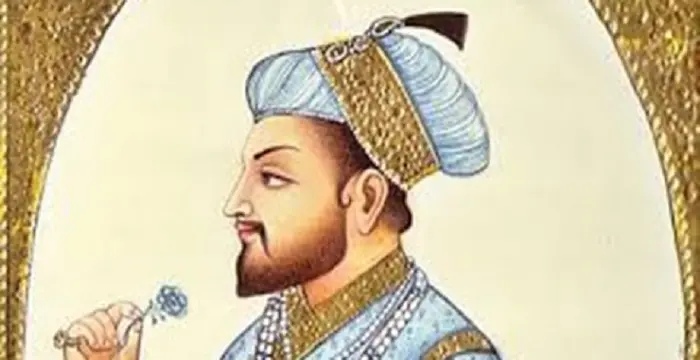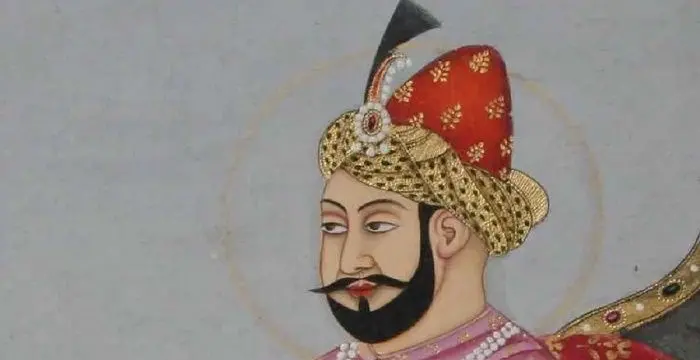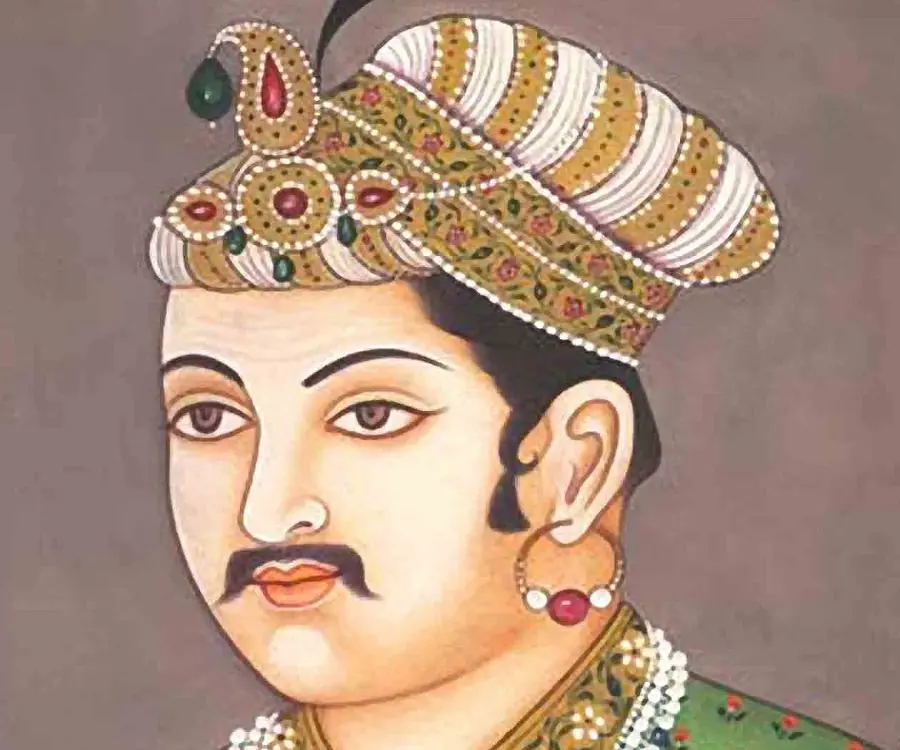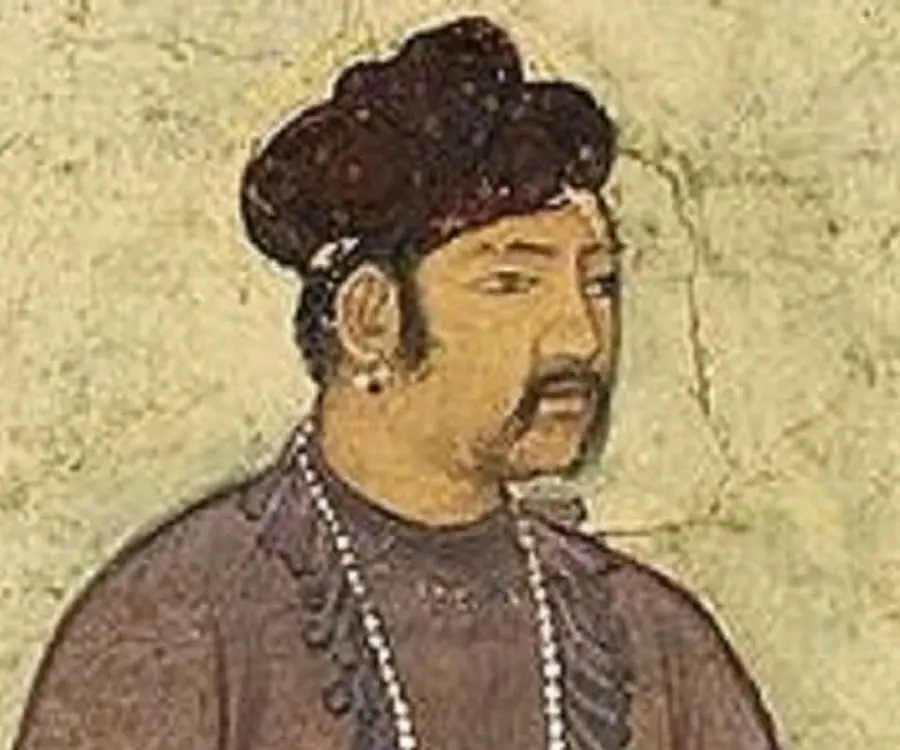
Akbar - Mughal Emperor, Family and Family
Akbar's Personal Details
Mughal emperor Akbar was one of the greatest monarchs in the history of India
| Information | Detail |
|---|---|
| Birthday | October 14, 1542 |
| Died on | October 27, 1605 |
| Nationality | Indian |
| Famous | Historical Personalities, Emperors & Kings, Emperors, Kings, Mughal Emperor |
| Spouses | Mariam-uz-Zamani |
| Siblings | Mirza Muhammad Hakim |
| Known as | Abu'l-Fath Jalal-ud-din Muhammad Akbar, Akbar I |
| Childrens | Jahangir |
| Birth Place | Umerkot |
| Religion | Islam, Din-e Ilahi, Sufism |
| Gender | Male |
| Father | Humayun |
| Mother | Hamida Banu Begum |
| Sun Sign | Libra |
| Born in | Umerkot |
| Famous as | Mughal Emperor |
| Died at Age | 63 |
// Famous Mughal Emperor
Shah Jahan
Shah Jahan was the fifth Mughal Emperor of India. He is famous for constructing the Taj Mahal. This biography of Shah Jahan provides detailed information about his childhood, life, achievements, works & timeline.
Jahangir
Jahangir was the fourth Mughal emperor, counted amongst the greatest Indian Emperors. This biography of Jahangir provides detailed information about his childhood, life, achievements, works & timeline.
Humayun
Humayun was the second Mughal ruler of territories in the Indian subcontinent. This biography of Humayun provides detailed information about his childhood, life, achievements, works & timeline.
Akbar's photo
Who is Akbar?
Akbar was one of the most powerful emperors of the Mughal Dynasty and the greatest Muslim ruler who built a large empire expanding over most of the Indian subcontinent. Right from the age of 13 when he took over the reins of the Mughal Empire, he conquered and subjugated territories and states in the northern, western and eastern regions, especially Punjab, Delhi, Agra, Rajputana, Gujarat, Bengal, Kabul, Kandahar and Baluchistan, to bring most of India under his control. Despite being illiterate, he possessed exceptional knowledge in almost all subjects. He earned high respect from his non-Muslim subjects, mainly due to his adoption of policies that created a peaceful atmosphere in his diverse empire. He also re-organized taxation systems, divided his army following the mansabdari system, and established foreign relations with the West. Being a patron of art and culture, he got a number of literature books written in various languages and constructed numerous architectural masterpieces during his reign, such as Agra Fort, Buland Darwaza, Fatehpur Sikri, Humayun Tomb, Allahabad Fort, Lahore Fort, and his own mausoleum at Sikandra. He started a new sect ‘Din-i-Ilahi’ by deriving elements from various religions
// Famous Emperors
Sundiata Keita
Sundiata Keita was the founder of the Mali Empire in West Africa. This biography profiles his childhood, early life, struggles, founding of empire, rule, administration, achievements and also gives some fun facts.
Ashoka
Ashoka was the third emperor of the Mauryan Dynasty and ruled almost the entire Indian subcontinent. This biography profiles his childhood, life, reign, achievements and timeline
Murad IV
Murad IV was one of the mighty Sultans in the history of the Ottoman Empire. This biography profiles his childhood, family, accession, rule, administration and timeline.
Childhood & Early Life
Akbar was born as Abu’I-Fath Jalal ud-din Muhammad Akbar on October 14, 1542 at the Rajput fortress of Umerkot in Sindh (in present-Pakistan), to Mughal emperor Humayun and his teenage wife, Hamida Banu Begum.
Since Humayun was in exile, little Akbar was raised by his paternal uncles in Kabul, due to which he spent most of his time hunting, horse riding, playing sword, and running, which made him a trained and skilful warrior.
He did not learn to read or write, but got texts on history, religion, science, philosophy and other topics recited.
Accession & Reign
Soon after Humayun’s death in 1556, he ascended the Mughal throne and became the ‘Shahanshah’ (King of Kings) at the age of 13, in Kalanaur, Punjab, with Bairam Khan as his regent and childhood guardian.
Before his death, Akbar’s father Humayun had succeeded in regaining control of some prominent areas such as Delhi, Punjab and Agra but the Mughal rule in these areas looked precarious. The Surs reconquered Agra and Delhi following the death of Humayun.
While the Mughal army was marching against Sikandar Shah Suri in the Punjab, Hemu, the Hindu general in the Sur Dynasty, proclaimed himself Hindu emperor and drove away the Mughals from some important places in the India-Gangetic plains.
After dealing with Sikandar Shah Suri, the Mughal army marched on Delhi. The Mughal army under Bairam Khan defeated Hemu and the Sur army on November 5, 1556 at the Second Battle of Panipat. Thereafter Akbar captured Agra and Delhi, where he stayed for a month before traveling to Punjab to deal with resurgent Sikandar Shah Suri, who, when pursued, fled to Bengal, leaving Lahore and Multan for the Mughals.
His other conquests in North India included Ajmer and Gwalior Fort, after defeating the Sur forces.
In 1560, Akbar dismissed Bairam Khan as he wanted to assert his power and position. Bairam was forced to head to Mecca for Hajj but was assassinated on the way.
Although he succeeded in invading Malwa under his foster-brother Adham Khan and Mughal commander, Pir Muhammad Khan, he had to wait for one year to conquer the province by doing away with Khan for his betrayal and misuse of the treasures.
After the conquest of Ajmer and Nagor in northern Rajputana, he established his control over the entire Rajputana by forcing the states to accept his suzerainty, leaving aside the Mewar ruler, Udai Singh.
In 1567, he attacked Chittorgarh Fort and captured it after four months, following which he raided Ranthambore Fort in 1568 which surrendered in the next couple months.
In order to trade with Asia, Africa and Europe through the Arabian Sea, he raided Ahmedabad, Surat and other cities in 1573, thus marking his decisive victory over Gujarat and celebrated it by erecting Buland Darwaza at Fatehpur Sikri.
In 1573, he signed a treaty with the Portuguese, under which the latter retained their power on the western coast in the Indian Ocean while the Mughals were allowed to send pilgrim ships for Hajj to Mecca and Medina.
He created the Ibadat Khana (House of Worship) at Fatehpur Sikri in 1575, following which he introduced a new sect ‘Din-i-Ilahi’ in 1582, which combined the practices of Islam, Hinduism, Jainism, Christianity and Zoroastrianism.
He defeated Pratap Singh, Udai Singh’s son and successor, at the Battle of Haldighati in 1576, thereby gaining control over Mewar.
He adopted a decentralized system to lessen the burden on peasants for paying annual taxes, which was discontinued in 1580 and replaced by dahsala, under which one-third of the average produce of the last ten years was to be paid.
In 1581, he captured Kabul and defeated his brother and Kabul ruler, Mirza Muhammad Hakim, who invaded Punjab. However, upon Hakim’s death in 1585, Kabul came under the Mughal Empire.
Thereafter, he conquered Kashmir in 1589, Sindh in 1591 and Kandahar and Baluchistan in 1595.
He appointed mansabdars, or military commanders, in different regions to manage his vast empire. These mansabdars were divided into 33 classes, based on the number of troops assigned to them.
He employed a group of nine intelligent people in his court, known as nine jewels or Navaratnas – Faizi, Mian Tansen, Birbal, Raja Man Singh, Todar Mal, Abdul Rahim, Abul Fazl, Mulla Do-Piyaza and Fakir Aziao-Din.
Major Battles
In November 1556, his forces defeated Hemu and the Sur army at the Second Battle of Panipat, where Hemu was shot in his eye and later captured and executed.
Asaf Khan led the Mughal forces and raided the Gondwana kingdom in 1564, defeating its ruler, Rani Durgavati, at the Battle of Damoh, who killed her minor son Raja Vir Narayan and committed suicide to save her honor.
Akbar defeated Daud Khan, the ruler of the only Afghan haven in India – Bengal, at the Battle of Tukaroi in 1575, who was captured and killed by the Mughal forces in another battle, thereby annexing Bengal and parts of Bihar.
Achievements
During his reign, the Mughal Empire extended to most of the Indian subcontinent, stretching from the Himalayas in the north to the Vindhyas in the south and Hindukush in the north-west to Brahmaputra River in the east.
He annulled the special tax payable by Hindus for making pilgrimages in 1563 and completely abolished the jizya, or the annual tax, paid by non-Muslims in 1564, thus earning respect from his subjects.
In 1569, he established a new capital west of Agra to celebrate his victory over Chittorgarh and Ranthambore, which was named Fatehpur Sikri (‘City of Victory’) in 1573 after he conquered Gujarat.
Personal Life & Legacy
He married his first cousin, Ruqaiya Sultan Begum, in 1551. He is said to have had 12 more wives from different ethnic and religious backgrounds.
A political alliance with the Rajputs culminated in his marriage to Heer Kunwari (also called Harka Bai or Jodha Bai) in 1562, who became one of his main queens. She gave birth to a son, Salim, later known as Jahangir, in 1569.
In October 1605, he fell seriously ill with dysentery and died three weeks later. He was buried in a mausoleum at Sikandra, Agra. He was succeeded by his son.
Several international novels, such as ‘The Years of Rice and Salt’ (2002), ‘The Solitude of Emperors’ (2007), and ‘The Enchantress of Florence’ (2008) are based on his life.
A number of television series - ‘Akbar-Birbal’ (late 1990s) and ‘Jodha Akbar’ (since 2013) and movies - ‘Mughal-e-Azam’ (1960) and ‘Jodhaa Akbar’ (2008) have chronicled this powerful character.
// Famous Kings
Sundiata Keita
Sundiata Keita was the founder of the Mali Empire in West Africa. This biography profiles his childhood, early life, struggles, founding of empire, rule, administration, achievements and also gives some fun facts.
Ashoka
Ashoka was the third emperor of the Mauryan Dynasty and ruled almost the entire Indian subcontinent. This biography profiles his childhood, life, reign, achievements and timeline
Murad IV
Murad IV was one of the mighty Sultans in the history of the Ottoman Empire. This biography profiles his childhood, family, accession, rule, administration and timeline.
Akbar biography timelines
- // 14th Oct 1542Akbar was born as Abu’I-Fath Jalal ud-din Muhammad Akbar on October 14, 1542 at the Rajput fortress of Umerkot in Sindh (in present-Pakistan), to Mughal emperor Humayun and his teenage wife, Hamida Banu Begum.
- // 1551He married his first cousin, Ruqaiya Sultan Begum, in 1551. He is said to have had 12 more wives from different ethnic and religious backgrounds.
- // 1556Soon after Humayun’s death in 1556, he ascended the Mughal throne and became the ‘Shahanshah’ (King of Kings) at the age of 13, in Kalanaur, Punjab, with Bairam Khan as his regent and childhood guardian.
- // Nov 1556In November 1556, his forces defeated Hemu and the Sur army at the Second Battle of Panipat, where Hemu was shot in his eye and later captured and executed.
- // 5th Nov 1556After dealing with Sikandar Shah Suri, the Mughal army marched on Delhi. The Mughal army under Bairam Khan defeated Hemu and the Sur army on November 5, 1556 at the Second Battle of Panipat. Thereafter Akbar captured Agra and Delhi, where he stayed for a month before traveling to Punjab to deal with resurgent Sikandar Shah Suri, who, when pursued, fled to Bengal, leaving Lahore and Multan for the Mughals.
- // 1560In 1560, Akbar dismissed Bairam Khan as he wanted to assert his power and position. Bairam was forced to head to Mecca for Hajj but was assassinated on the way.
- // 1562 To 1569A political alliance with the Rajputs culminated in his marriage to Heer Kunwari (also called Harka Bai or Jodha Bai) in 1562, who became one of his main queens. She gave birth to a son, Salim, later known as Jahangir, in 1569.
- // 1563 To 1564He annulled the special tax payable by Hindus for making pilgrimages in 1563 and completely abolished the jizya, or the annual tax, paid by non-Muslims in 1564, thus earning respect from his subjects.
- // 1564Asaf Khan led the Mughal forces and raided the Gondwana kingdom in 1564, defeating its ruler, Rani Durgavati, at the Battle of Damoh, who killed her minor son Raja Vir Narayan and committed suicide to save her honor.
- // 1567 To 1568In 1567, he attacked Chittorgarh Fort and captured it after four months, following which he raided Ranthambore Fort in 1568 which surrendered in the next couple months.
- // 1569 To 1573In 1569, he established a new capital west of Agra to celebrate his victory over Chittorgarh and Ranthambore, which was named Fatehpur Sikri (‘City of Victory’) in 1573 after he conquered Gujarat.
- // 1573In order to trade with Asia, Africa and Europe through the Arabian Sea, he raided Ahmedabad, Surat and other cities in 1573, thus marking his decisive victory over Gujarat and celebrated it by erecting Buland Darwaza at Fatehpur Sikri.
- // 1573In 1573, he signed a treaty with the Portuguese, under which the latter retained their power on the western coast in the Indian Ocean while the Mughals were allowed to send pilgrim ships for Hajj to Mecca and Medina.
- // 1575 To 1582He created the Ibadat Khana (House of Worship) at Fatehpur Sikri in 1575, following which he introduced a new sect ‘Din-i-Ilahi’ in 1582, which combined the practices of Islam, Hinduism, Jainism, Christianity and Zoroastrianism.
- // 1575Akbar defeated Daud Khan, the ruler of the only Afghan haven in India – Bengal, at the Battle of Tukaroi in 1575, who was captured and killed by the Mughal forces in another battle, thereby annexing Bengal and parts of Bihar.
- // 1576He defeated Pratap Singh, Udai Singh’s son and successor, at the Battle of Haldighati in 1576, thereby gaining control over Mewar.
- // 1580He adopted a decentralized system to lessen the burden on peasants for paying annual taxes, which was discontinued in 1580 and replaced by dahsala, under which one-third of the average produce of the last ten years was to be paid.
- // 1581 To 1585In 1581, he captured Kabul and defeated his brother and Kabul ruler, Mirza Muhammad Hakim, who invaded Punjab. However, upon Hakim’s death in 1585, Kabul came under the Mughal Empire.
- // 1589 To 1595Thereafter, he conquered Kashmir in 1589, Sindh in 1591 and Kandahar and Baluchistan in 1595.
- // Oct 1605In October 1605, he fell seriously ill with dysentery and died three weeks later. He was buried in a mausoleum at Sikandra, Agra. He was succeeded by his son.
// Famous Historical Personalities
Sundiata Keita
Sundiata Keita was the founder of the Mali Empire in West Africa. This biography profiles his childhood, early life, struggles, founding of empire, rule, administration, achievements and also gives some fun facts.
Ashoka
Ashoka was the third emperor of the Mauryan Dynasty and ruled almost the entire Indian subcontinent. This biography profiles his childhood, life, reign, achievements and timeline
Jetsun Pema
Jetsun Pema is the Queen consort of Bhutan. Check out this biography to know about her childhood, family life, achievements and fun facts about her life.
Murad IV
Murad IV was one of the mighty Sultans in the history of the Ottoman Empire. This biography profiles his childhood, family, accession, rule, administration and timeline.
Xerxes I
Xerxes I (Xerxes the Great) was the fourth and the most famous king of the Archaemenid dynasty of Persia. This biography profiles his childhood, family, personal life, life history, achievements, campaigns, administration, death and other facts.
Sargon of Akkad
Sargon of Akkad, also called ‘Sargon the Great’, ‘Sarru-Kan’ and ‘Shar-Gani-Sharri’, was the founder and first king of the Akkadian Empire. This biography profiles his childhood, life, rule, administration, timeline, and gives some fun facts.
Akbar's FAQ
What is Akbar birthday?
Akbar was born at 1542-10-14
When was Akbar died?
Akbar was died at 1605-10-27
Where was Akbar died?
Akbar was died in Fatehpur Sikri
Which age was Akbar died?
Akbar was died at age 63
Where is Akbar's birth place?
Akbar was born in Umerkot
What is Akbar nationalities?
Akbar's nationalities is Indian
Who is Akbar spouses?
Akbar's spouses is Mariam-uz-Zamani
Who is Akbar siblings?
Akbar's siblings is Mirza Muhammad Hakim
Who is Akbar childrens?
Akbar's childrens is Jahangir
What is Akbar's religion?
Akbar's religion is Islam, Din-e Ilahi, Sufism
Who is Akbar's father?
Akbar's father is Humayun
Who is Akbar's mother?
Akbar's mother is Hamida Banu Begum
What is Akbar's sun sign?
Akbar is Libra
How famous is Akbar?
Akbar is famouse as Mughal Emperor











